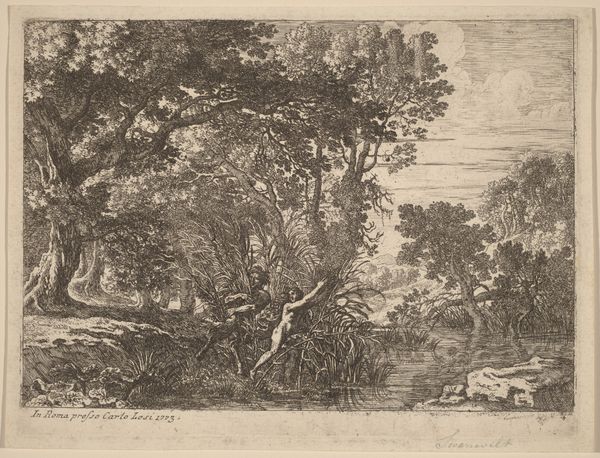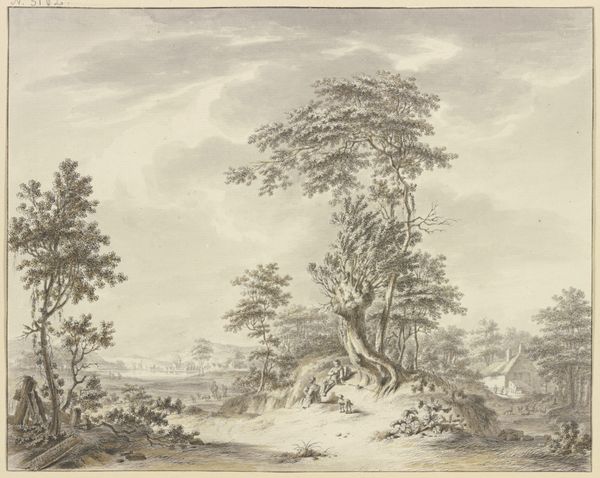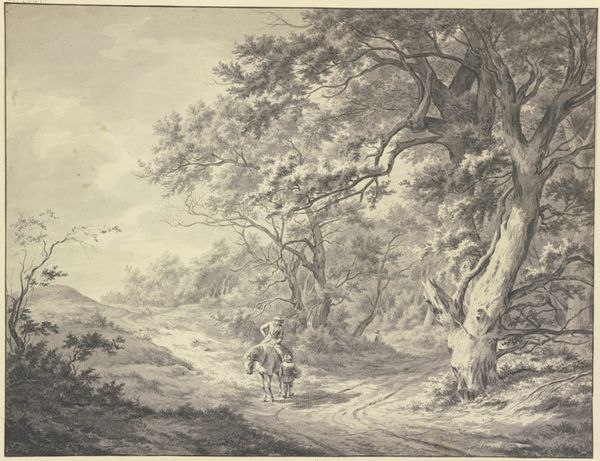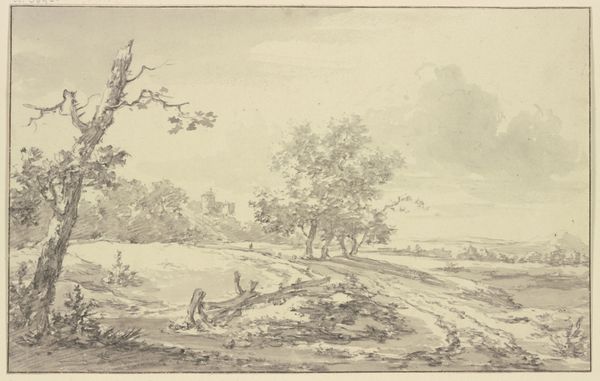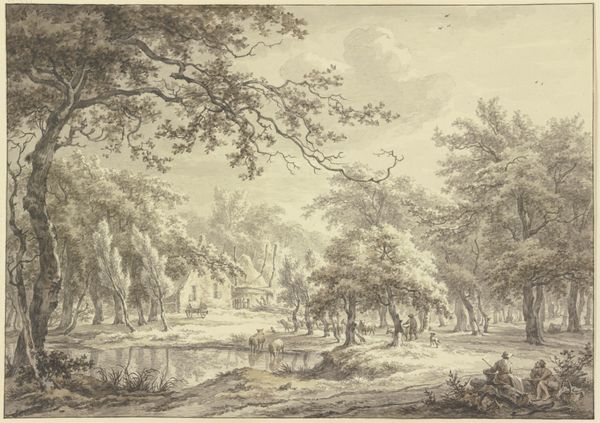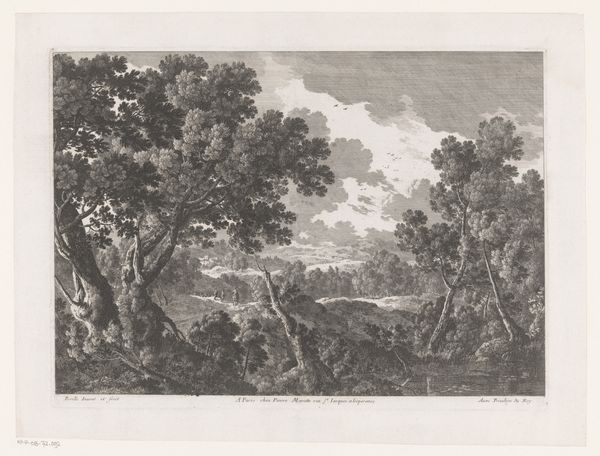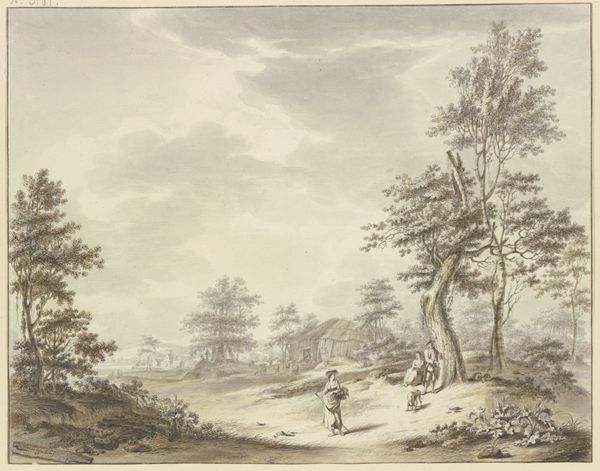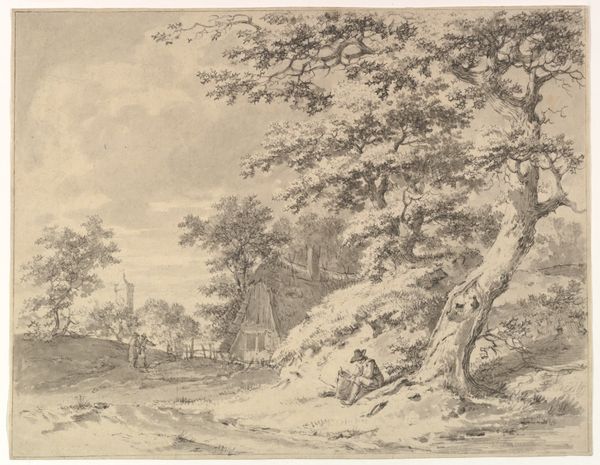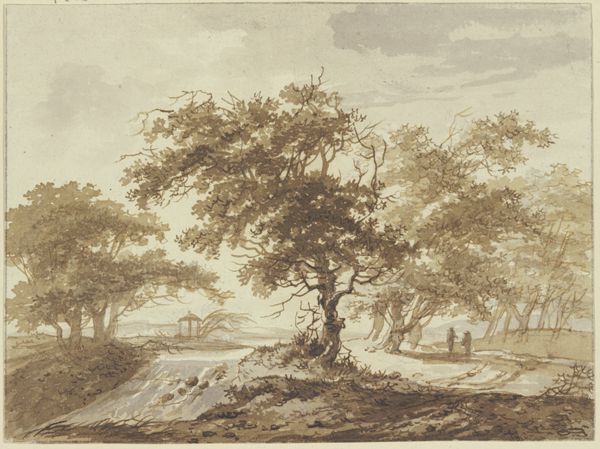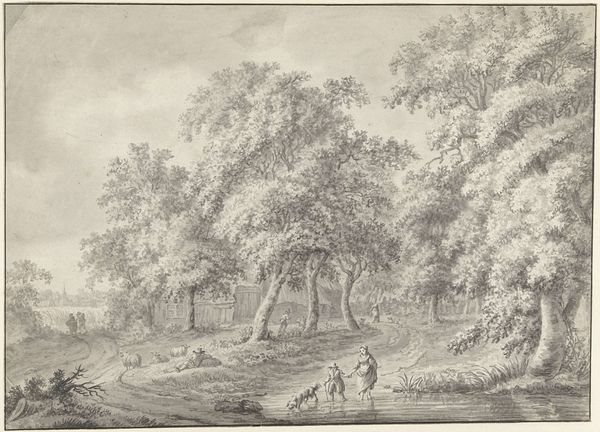
Fahrweg am Ausgang eines Waldes, vorne ein ruhender Wanderer mit einem Bündel, am Horizont eine Stadt
0:00
0:00
drawing, paper, ink
#
drawing
#
ink drawing
#
baroque
#
pen sketch
#
landscape
#
paper
#
ink
#
genre-painting
Copyright: Public Domain
Curator: Immediately I'm struck by the tranquility, the sense of respite offered in this scene. The muted tones contribute, but it's primarily the figure taking rest on his journey. Editor: We’re looking at "Fahrweg am Ausgang eines Waldes, vorne ein ruhender Wanderer mit einem Bündel, am Horizont eine Stadt"—loosely translated, "Roadway at the Edge of a Forest, with a Resting Traveler"—an ink drawing on paper by Carel Lodewijk Hansen. It resides here at the Städel Museum. Though undated, the landscape suggests the influence of the Baroque era. Curator: The lone wanderer is positioned centrally, the path a visual signifier, leading towards a distant city on the horizon. Are they fleeing it, or headed towards it? A rather potent, if subtle, visual device that really pulls at my historian sensibilities; migration was, is, and shall always be part of what makes our culture. Editor: The trees here—stark, reaching—almost feel like witnesses, their gnarled forms speaking of resilience. Trees have carried this type of cultural symbollism of hope or burden depending on where you stand, even across vastly different places and eras, from pagan groves to the Romantics! Curator: You mention reaching trees; notice how the town appears in the upper space of the landscape. While subtle, is the artist telling us something about the allure of the city versus the perceived threat, or safety, of the forest? Were urban centers desirable and safe? We might ask if that was true for the social classes across society. Editor: It could symbolize potential and risk simultaneously; but equally possible that a psychological reading would imply the weary traveller as an 'everyman', contemplating which path to choose and what the implications may be? The symbolism certainly allows for multiple readings, given that the landscape itself has archetypal weight! Curator: And I think the true value of Hansen's work lies exactly there. This invites us to think about larger issues concerning art's function and agency to shape societal narratives of genre in ink and paper, the medium here becoming less relevant than the question Hansen dares to provoke. Editor: Agreed; seeing through your lens shows it offers such rich layers of symbolic reflection. A small journey, perhaps, and yet filled with contemplation for where we may go.
Comments
No comments
Be the first to comment and join the conversation on the ultimate creative platform.

